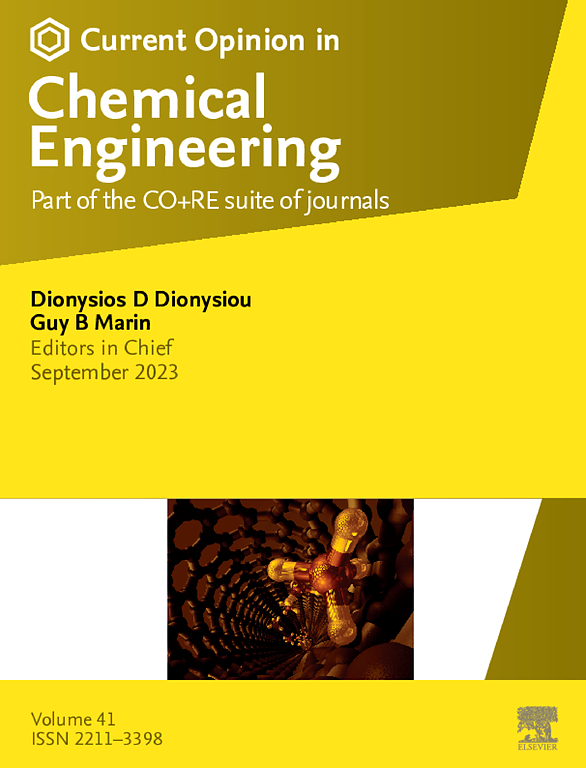二氧化碳的直接空气捕获:工业视角
IF 6.8
2区 工程技术
Q1 BIOTECHNOLOGY & APPLIED MICROBIOLOGY
引用次数: 0
摘要
直接空气捕获(DAC)是一种关键的二氧化碳去除(CDR)技术,通过平衡大气中的二氧化碳释放和去除来实现净零排放。它有两个关键作用:(a)当与碳捕集与封存(DAC-CCS)相结合时,它可以永久去除二氧化碳,以抵消航空等难以减少的排放源的排放;(b)当与碳捕集与利用(DAC-CCU)相结合时,它为生产去化石燃料和零碳化学品提供非化石二氧化碳。为了完成这些角色,DAC系统必须具有可扩展性和经济可行性。虽然学术研究通常侧重于在有限的天气条件下和有限的时间内评估吸附剂的性能,但我们主张工业规模部署要求DAC系统具有额外的关键特性,例如低压降,在广泛的天气条件(温度,相对湿度)下长时间(年)的高可靠性,抵抗空气中颗粒的污染,并且不会因重新摄入二氧化碳耗尽的空气而损失性能。这些关键特征更常在接近商业化的公司的专利文献中提到,而不是在学术出版物中。此外,DAC技术必须具有资本效率,并使用低成本、可回收的吸附剂。本文章由计算机程序翻译,如有差异,请以英文原文为准。
Direct air capture of CO2: an industrial perspective
Direct air capture (DAC) is a crucial carbon dioxide removal (CDR) technology for achieving net-zero emissions by balancing atmospheric CO₂ release with removal. It serves two key roles: (a) when integrated with Carbon Capture and Storage (DAC-CCS), it enables permanent CO₂ removal to offset emissions from hard-to-abate sources like aviation; and (b) when combined with Carbon Capture and Utilization (DAC-CCU), it provides non-fossil CO₂ for producing defossilized fuels and zero-carbon chemicals. To fulfill these roles, DAC systems must be scalable and economically viable. While academic studies often focus on assessing sorbent performance under a limited range of weather conditions and for limited periods, we advocate that industrial scale deployment demands DAC systems with additional key features such as low pressure drop, high reliability for long periods (years) in a wide range of weather conditions (temperature, relative humidity), resistance to fouling from particulates in air, and without loss of performance by reingestion of CO2 depleted air. These key features are more commonly addressed in patent literature by companies nearing commercialization rather than in academic publications. Moreover, DAC technologies must be capital-efficient, and use low-cost, recyclable sorbents.
求助全文
通过发布文献求助,成功后即可免费获取论文全文。
去求助
来源期刊

Current Opinion in Chemical Engineering
BIOTECHNOLOGY & APPLIED MICROBIOLOGYENGINE-ENGINEERING, CHEMICAL
CiteScore
12.80
自引率
3.00%
发文量
114
期刊介绍:
Current Opinion in Chemical Engineering is devoted to bringing forth short and focused review articles written by experts on current advances in different areas of chemical engineering. Only invited review articles will be published.
The goals of each review article in Current Opinion in Chemical Engineering are:
1. To acquaint the reader/researcher with the most important recent papers in the given topic.
2. To provide the reader with the views/opinions of the expert in each topic.
The reviews are short (about 2500 words or 5-10 printed pages with figures) and serve as an invaluable source of information for researchers, teachers, professionals and students. The reviews also aim to stimulate exchange of ideas among experts.
Themed sections:
Each review will focus on particular aspects of one of the following themed sections of chemical engineering:
1. Nanotechnology
2. Energy and environmental engineering
3. Biotechnology and bioprocess engineering
4. Biological engineering (covering tissue engineering, regenerative medicine, drug delivery)
5. Separation engineering (covering membrane technologies, adsorbents, desalination, distillation etc.)
6. Materials engineering (covering biomaterials, inorganic especially ceramic materials, nanostructured materials).
7. Process systems engineering
8. Reaction engineering and catalysis.
 求助内容:
求助内容: 应助结果提醒方式:
应助结果提醒方式:


